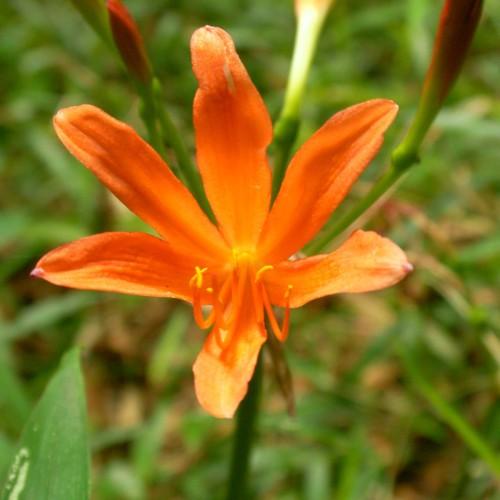
lycoris
Lycoris sanguinea
Cycle:
Perennial
Watering:
Average
Hardiness Zone:
6 - 10
Flowers:
Flowers
Sun:
Full sun,part shade
Leaf:
Yes
Growth Rate:
Low
Maintenance:
Moderate
Salt Tolerant:
Yes
Care Level:
Medium
watering
Lycoris sanguinea should be watered early in the morning when the soil is still cool. During the summer, it should be watered once a week, using about 4 liters of water for each plant. Soaking the soil thoroughly and evenly is more important than light or frequent watering, as this will promote deep root growth. In winter, watering should be reduced to once a month, or whenever the soil feels dry. Too much watering can lead to rot and mildew in colder climates.
sunlight
Lycoris sanguinea, commonly known as "red spider lily," prefers full sunlight and should be given no more than 6-8 hours per day. During summer months, the plant should be placed in a location that receives partial shade from midday sun, while in autumn and winter it should be planted in a location with direct, unfiltered sunlight due to its cold-resistant nature. The plant does best in slightly acidic, sandy, moist soils but is tolerant of a range of soil types as long as it is well-drained. It requires ample water, humidity, and protection from high winds. In the winter, Lycoris sanguinea requires colder temperatures to hibernate and should not be given prolonged exposure to frost or freeze. Annual pruning of the foliage is recommended in order to ensure the plant retains its shape.
pruning
Lycoris sanguinea should be pruned late summer or early fall. This deciduous plant should be pruned back to 6-12 inches above the ground. Be sure to wear protective gloves and clothing as the sap from this plant can cause a temporary blistering irritation upon contact with the skin. Pruning should be done with caution, as these plants tend to be brittle and can easily snap if handled roughly. Make sure to prune the flowers and seed capsules first. Remove any damaged or diseased branches and cut down any dead stems or shoots. Deadheading also encourages the production of more flowers and finer foliage. Finally, prune off the old leaves that have turned yellow before fertilizing.
